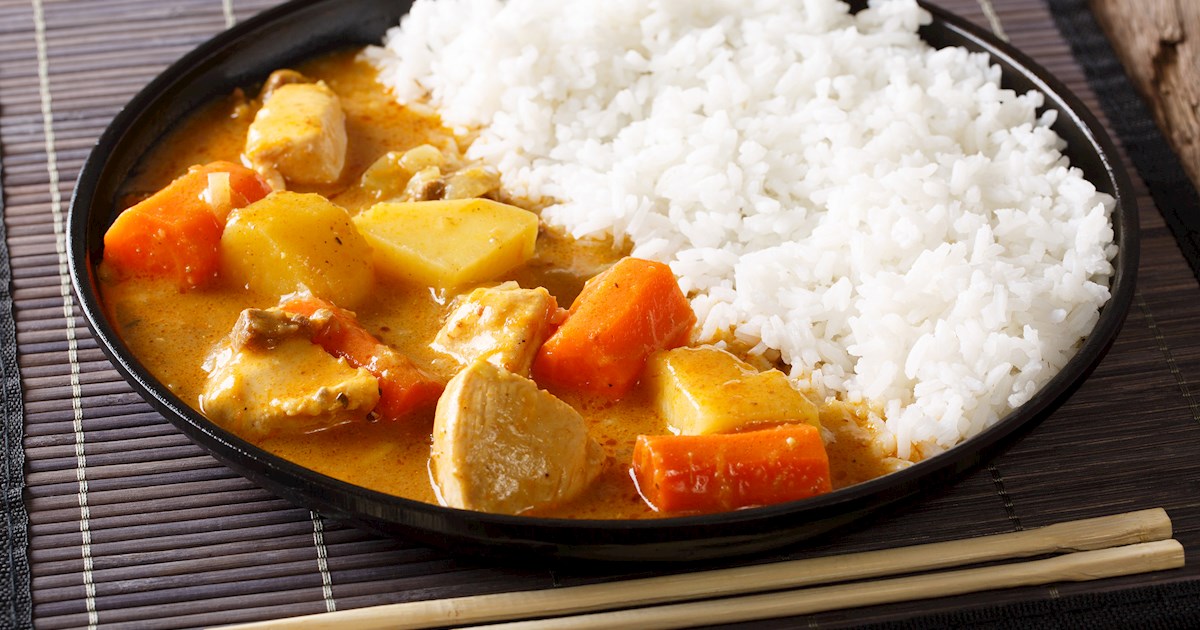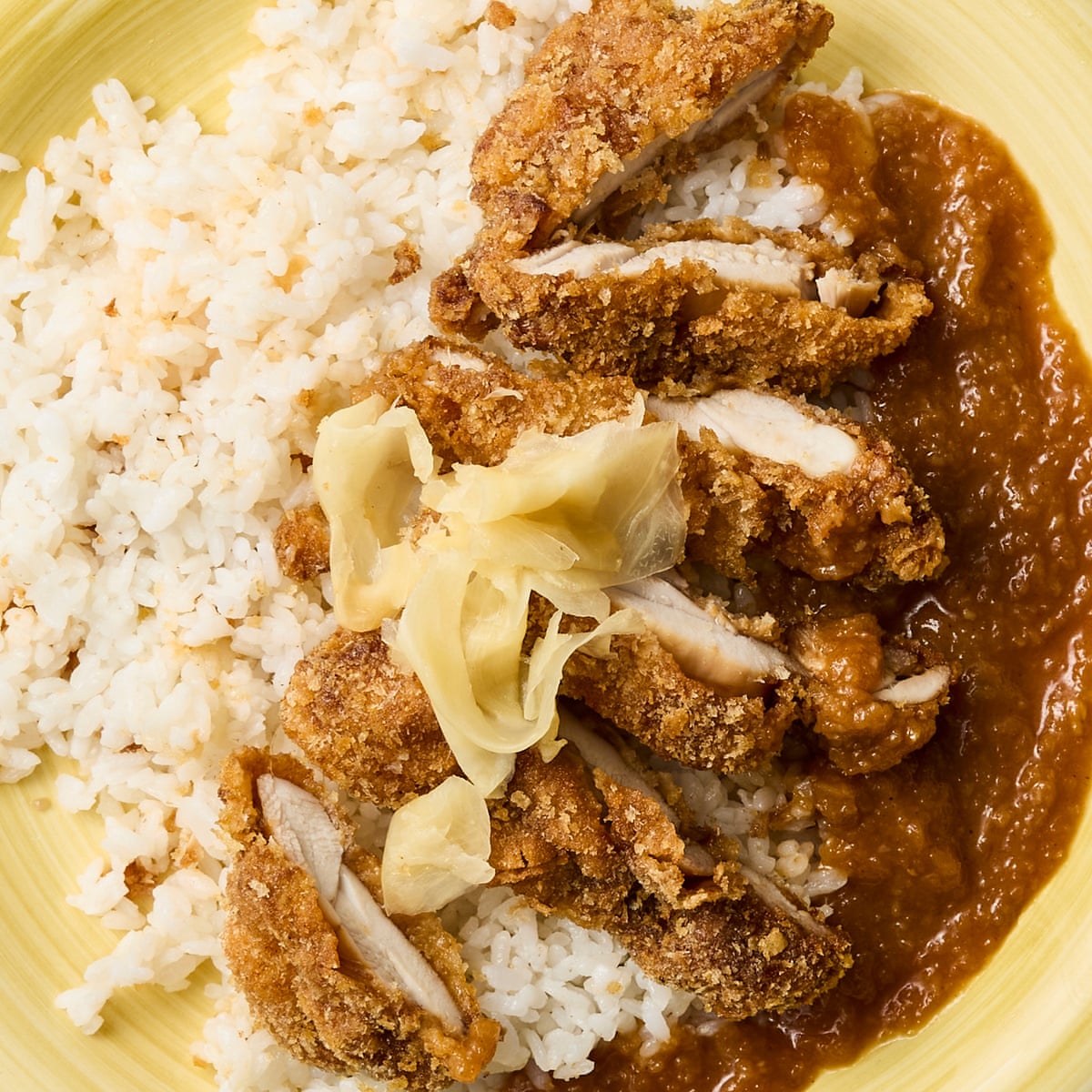Kare Raisu (Japanese Curry Rice): Immerse Yourself in Japan’s Iconic Culinary Experience with Yoshida Hotel
Embark on a journey of flavor and cultural exploration as Yoshida Hotel invites you to discover the world of Kare Raisu (Japanese curry rice). As an essential comfort dish found in homes and restaurants across Japan, Kare Raisu enchants travelers, foodies, and locals alike with its distinctive taste. Yoshida Hotel is delighted to be your guide in unraveling the story, origins, and modern phenomena of this remarkable Japanese cuisine.
In this comprehensive article, we will explore Kare Raisu (Japanese curry rice) in all its aspects—history, regional variations, secret recipes, cultural context, and the unparalleled enjoyment of relishing this dish as part of an authentic Japanese culinary adventure.
Kare Raisu (Japanese Curry Rice): A Journey Through Culinary Time
The Birth and Evolution of Kare Raisu (Japanese Curry Rice)
Kare Raisu (Japanese curry rice) traces its origins back to the late 19th century, during Japan’s Meiji era, when British naval officers introduced curry powder to Japanese kitchens. Japan, an island nation open to foreign influences yet fiercely protective of its culture, quickly adapted the classic curry to suit local palates. Unlike Indian or British curries, Kare Raisu is distinguished by its thick, mellow, and slightly sweet sauce, reflecting a unique Japanese culinary signature.
Traditional Japanese curry is made with a blend of curry powder, flour, and oil to create a roux, serving as the base for simmered meat, potatoes, carrots, and onions. Poured over a generous mound of steamed Japanese rice, this dish became an everyday staple, enjoyed by schoolchildren, families, travelers, and even served on train journeys and ferries.
![]()
Kare Raisu (Japanese Curry Rice) in Japanese Culture
Kare Raisu (Japanese curry rice) holds a special place in Japanese hearts—as a comfort food, a celebration dish, and a reliable meal after long days. Mentioning Kare Raisu evokes nostalgia for home-cooked dinners, memories of school cafeterias, and lively gatherings at local restaurants. The aroma of curry simmering on a family stove carries a sense of togetherness and tradition that is uniquely Japanese.
Unique Flavors, Regional Styles, and Secret Recipes
Exploring Regional Variations of Kare Raisu (Japanese Curry Rice)
Japan’s vast geography and diverse local flavors have given rise to countless styles of Kare Raisu. Let’s tour some of the most beloved regional variations:
Hokkaido’s Veggie-Rich Curry Rice
In the northernmost region of Hokkaido, Kare Raisu (Japanese curry rice) is celebrated for its abundant local vegetables—carrots, pumpkins, onions—combined with tender pork belly or lamb. Here, the curry is often spicier and heartier, perfect for warming up during harsh winters.

Osaka and Kansai: A Sweet and Savory Twist
Osaka and the wider Kansai region add their twist with sweeter curries. Apples, honey, and soy sauce enrich the sauce, and toppings like tonkatsu (breaded pork cutlet) or even a molten cheese layer elevate the dish further.
Kyushu: Deep Flavors and Sea Bounty
Kyushu’s Kare Raisu (Japanese curry rice) sometimes features seafood such as shrimp or locally-caught fish, along with regional specialties like kurobuta pork. The rich, complex flavors reflect Kyushu’s reputation for bold, umami-rich cuisine.
![]()
The Secret to Japanese Curry Roux
Every great Kare Raisu begins with a perfectly balanced curry roux, the cornerstone of Japanese curry-making. Popular brands like House Foods or S&B offer convenient curry cubes, enabling home cooks nationwide to recreate authentic flavors. However, many chefs and home enthusiasts craft their curry roux from scratch, blending their preferred ratio of curry powder, garam masala, cocoa powder, and secret spices, giving each plate of Kare Raisu its unique signature.
Dining Experience: Savoring Kare Raisu (Japanese Curry Rice) in Japan
The Ubiquitous Kare Raisu Dining Scene
Kare Raisu (Japanese curry rice) can be relished in countless settings, from humble eateries and cafeterias to sophisticated restaurants. It is the highlight of “kare-ya” (curry shops), school lunches, train station bento (“ekiben”), cafes, and even Japanese fast-food chains. Chains such as CoCo Ichibanya have built an entire culinary empire around customizable curry rice, offering choices of toppings, rice portions, sauce spiciness, and local ingredients.
![]()
Toppings and Sides: Customizing the Kare Raisu Experience
One of the enthusing joys of Kare Raisu (Japanese curry rice) is customizing your plate with irresistible toppings and side dishes:
- Katsu Curry: Topped with a crispy pork or chicken cutlet, adding a delightful crunch to each bite.
- Onsen Tamago: Soft-cooked eggs that melt into the curry sauce for a creamy texture.
- Fukujinzuke: Pickled vegetables providing sweet and tangy contrast.
- Cheese Curry: Melted cheese for a rich, indulgent touch.
Home Cooking: Kare Raisu as Japan’s Beloved Home Meal
Preparing Kare Raisu (Japanese curry rice) at home brings families together. Supermarkets across Japan stock curry cubes and convenient meal kits, making curry night an easy and anticipated ritual. Each household has its secret tweaks: an extra apple, spoonful of miso, soy sauce drizzle, or even a hint of coffee or chocolate for added depth.
![]()
The Social and Cultural Impact of Kare Raisu (Japanese Curry Rice)
Kare Raisu (Japanese Curry Rice) in Festivals and Daily Life
Beyond the table, Kare Raisu (Japanese curry rice) appears at summer festivals, school lunches, and sports days. It is beloved for its simplicity, accessibility, and the ability to be prepared in large quantities, making it an ideal dish for gatherings, potlucks, and community celebrations.
![]()
The Science of Comfort: Why Kare Raisu Warms the Heart
Scientific studies suggest that aroma compounds and the presence of umami in Japanese curry trigger pleasant emotional responses, reinforcing the dish’s role as comfort food. The interplay of savory, sweet, and mild heat creates a balanced sensory experience that soothes both palate and soul.
Kare Raisu (Japanese Curry Rice) Trends: Modern Innovations and Global Adaptations
The Contemporary Japanese Curry Scene
Modern chefs continue to experiment with Kare Raisu (Japanese curry rice), fusing global culinary trends with traditional flavors. Vegan and plant-based versions draw on soy meat, beans, and coconut milk, making the dish accessible to wider audiences. Elegant fine-dining versions incorporate premium Wagyu beef, locally-grown organic vegetables, and innovative plating techniques.
![]()
The Global Journey of Kare Raisu (Japanese Curry Rice)
Kare Raisu (Japanese curry rice) has secured its place on the global stage, with Japanese restaurants worldwide featuring the dish as a staple. International chefs reimagine the classic with locally sourced vegetables and regional twists, while Japanese expatriate communities celebrate cultural connections through shared curry meals.
Curry Rice Cafés and Pop-Up Events
In global cities like Los Angeles, London, and Sydney, curry rice-themed cafés and pop-up events bring people together over plates of Kare Raisu (Japanese curry rice). These hubs turn a simple meal into an immersive experience, complete with Japanese décor, popular music, and cooking demonstrations.
![]()
Crafting the Ultimate Kare Raisu (Japanese Curry Rice)
The Art of Balancing Flavors and Textures
The secret to a memorable Kare Raisu (Japanese curry rice) lies in balancing savory and sweet, spice and comfort, softness of rice and crunch of toppings. Experimenting with spice levels, sweeteners (like grated apple or honey), and protein sources allows each chef or home cook to develop their signature variation.
![]()
Step-by-Step Guide to Making Authentic Kare Raisu (Japanese Curry Rice)
Ingredients:
- Japanese short-grain rice
- Protein (chicken, pork, beef, or tofu for a vegetarian option)
- Carrots, potatoes, onions
- Japanese curry roux (store-bought or homemade)
- Oil or butter for frying
- Water or stock
Directions:
- Rinse and prepare the rice. Cook according to package instructions.
- In a large pot, sauté chopped onions, then add your protein and brown well.
- Add chopped carrots and potatoes, sauté for a few minutes.
- Pour in enough water or stock to cover the ingredients, bring to a simmer.
- Skim any foam, then add broken pieces of curry roux. Stir until fully dissolved.
- Simmer until meat and vegetables are tender and sauce has thickened.
- Serve generous ladles of curry over a bed of fluffy rice, with your choice of toppings.
![]()
Tips and Tricks from Japanese Home Cooks
- For deeper flavor, rest the curry overnight and reheat before serving.
- Grate a small apple into the curry for sweetness and aroma.
- A small piece of chocolate or a dash of soy sauce adds unexpected depth.
- Adjust the spice by mixing mild and spicy curry roux blocks.
Kare Raisu (Japanese Curry Rice) and Japanese Hospitality
Omotenashi: The Spirit of Japanese Service
Omotenashi, or Japanese hospitality, extends to a steaming plate of Kare Raisu (Japanese curry rice). Whether in a cozy home or elegant restaurant, guests are welcomed with care, thoughtful presentation, and a desire to provide comfort. Kare Raisu embodies this spirit, offering warmth and nourishment with every serving.
![]()
Dining Etiquette and Cultural Insights
- Use a spoon, not chopsticks, for Kare Raisu (Japanese curry rice)—reflecting Japan’s fusion of East and West.
- Bow slightly to express gratitude before and after meals.
- Appreciate the harmony between rice and curry, rather than mixing indiscriminately.
Unveiling Lesser-Known Facts about Kare Raisu (Japanese Curry Rice)
Kare Raisu in Japanese Pop Culture
Kare Raisu (Japanese curry rice) often appears in anime, films, and TV dramas, symbolizing comfort and nostalgia. Characters are shown cooking and sharing curry, reinforcing its role as a beloved home dish.
![]()
Kare Raisu in School Lunches
Many Japanese have fond memories of Kare Raisu (Japanese curry rice) served in school cafeterias, often paired with milk and fruit. The mild flavors and familiar taste make curry rice a favorite among children.
Curry Rice Competitions and Festivals
Across Japan, cities host Kare Raisu competitions, inviting chefs and curry enthusiasts to showcase creative spins on this classic dish. Winners are acclaimed for their innovation and respect for tradition.
![]()
Kare Raisu (Japanese Curry Rice) for Travelers: A Must-Try Japanese Food Adventure
Where to Eat Kare Raisu (Japanese Curry Rice) in Japan
Travelers can indulge in Kare Raisu (Japanese curry rice) at curry houses, department store restaurants, and izakayas (Japanese pubs) nationwide. Regional curry specialties are must-try experiences for food adventurers.
How to Order and Enjoy Like a Local
When ordering Kare Raisu (Japanese curry rice), diners can select rice portion, spiciness level, and choice of toppings. For an authentic experience, try local recommendations and seasonal offerings.

Food Souvenirs: Bringing Kare Raisu Home
Many visitors purchase boxed curry roux or pre-packaged regional curries as souvenirs, allowing them to recreate their Japanese curry adventure after returning home.
Kare Raisu (Japanese Curry Rice) and the Future of Japanese Cuisine
Sustainability and Modern Eating Habits
The popularity of Kare Raisu (Japanese curry rice) is also due to its adaptability. Modern chefs emphasize seasonal, local ingredients and sustainable practices. Vegetarian and vegan versions highlight the dish’s ongoing evolution.
![]()
Culinary Education and International Exchanges
Japanese culinary schools and chefs worldwide incorporate Kare Raisu (Japanese curry rice) into cooking classes, fostering cross-cultural exchanges and spreading appreciation for Japanese food culture.
Conclusion
Kare Raisu (Japanese curry rice) stands as a testament to Japan’s creative culinary spirit, blending global influences with local tastes to produce a dish beloved by young and old. Through this vibrant dish, travelers, locals, and food lovers are invited to experience Japanese tradition, innovation, and togetherness.
Yoshida Hotel is honored to share this exploration of Kare Raisu (Japanese curry rice) and invites you to savor the diverse flavors waiting for you across Japan. Whether you are embarking on a journey or seeking comfort at home, Kare Raisu (Japanese curry rice) promises warmth, nostalgia, and discovery at every bite.
Details
Namistay chain hotel
- 61-63 Hoang Ke Viem, Bac My Phu, Ngu Hanh Son, Da Nang, Vietnam
- Hotline: 0905 432 992
- Lot 45 An Thuong 29, Bac My Phu, Ngu Hanh Son, Da Nang, Vietnam
- Hotline: 0977 455 546
- 42 An Thuong 26 Street, Bac My Phu, Ngu Hanh Son, Da Nang, Vietnam
- Hotline: 0965 442 842

